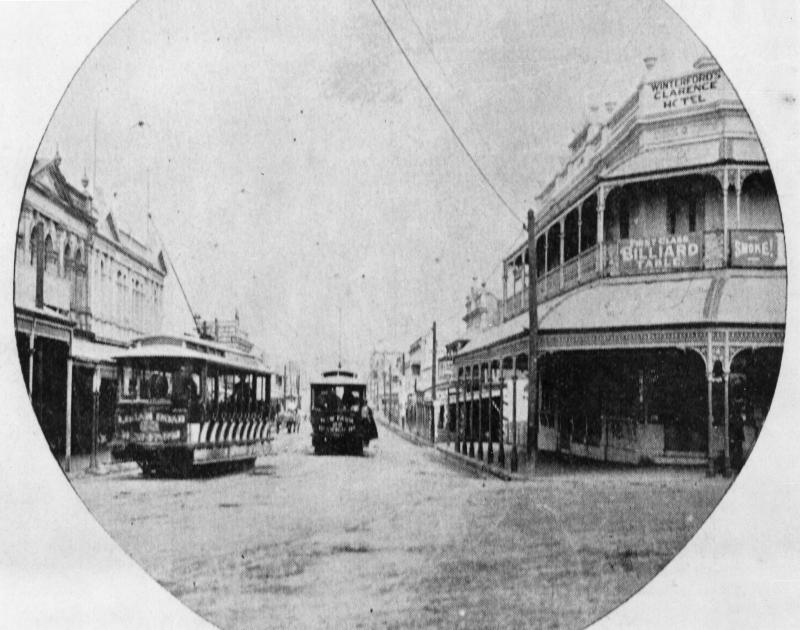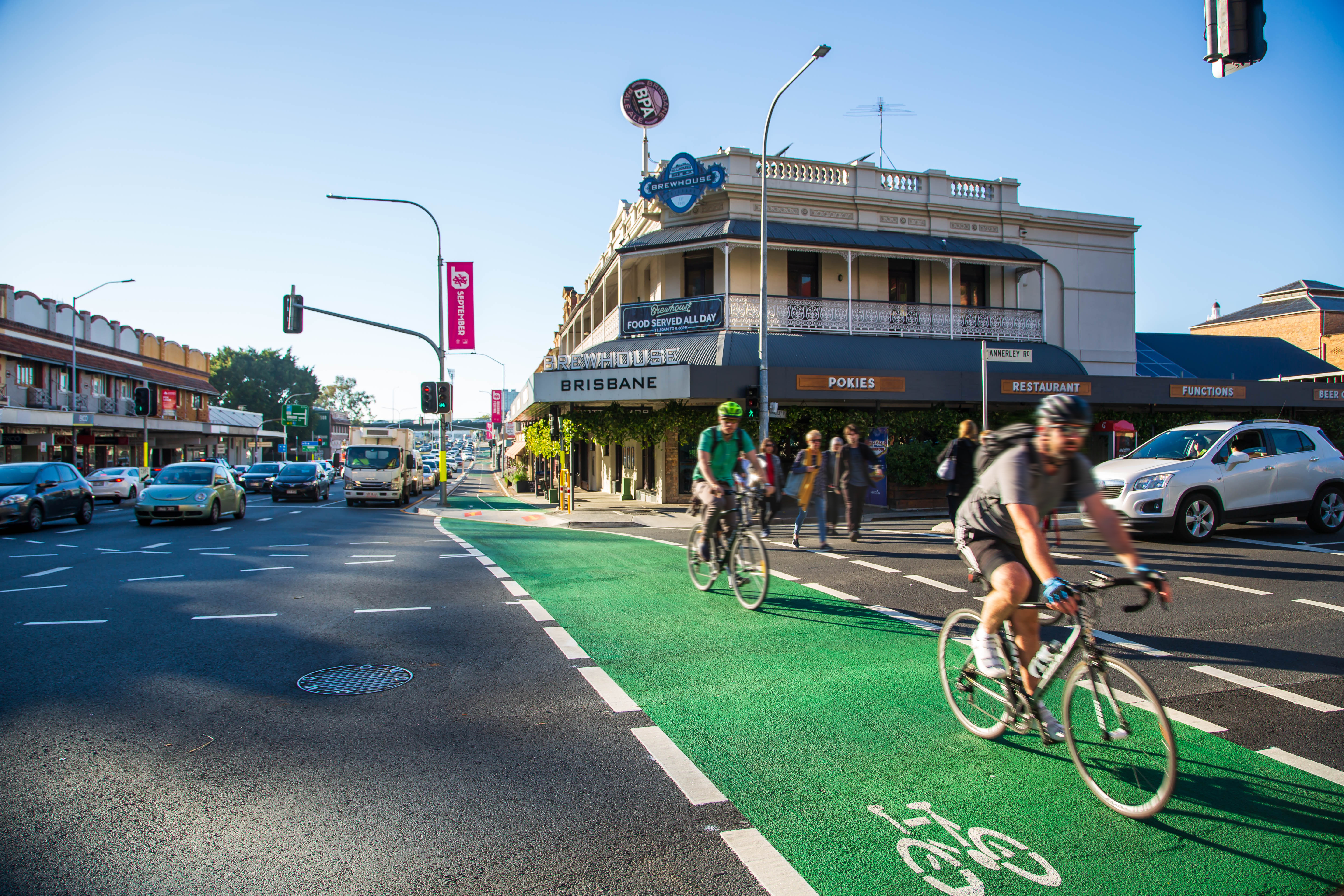Addresses
Type of place
Hotel (pub)
Period
Victorian 1860-1890
Style
Free Classical
Addresses
Type of place
Hotel (pub)
Period
Victorian 1860-1890
Style
Free Classical
The Clarence Corner Hotel was constructed in 1889 to replace the earlier (1863) Clarence Hotel. While the Clarence Hotel was built to serve the bullock teamsters travelling Boggo (now Annerley) Road to Ipswich, the Clarence Corner Hotel reflected the urbanisation of Woolloongabba. It was located in the centre of the Woolloongabba shopping precinct that was split by the construction of the South-east Freeway in the 1970s. The landmark Clarence Corner Hotel, unlike the nearby Railway Hotel also constructed in 1889, retains its Victorian era facade.
Also known as
The Newton
Lot plan
L1_RP11611
Key dates
Local Heritage Place Since —
Date of Citation —
Construction
Roof: Corrugated iron;Walls: Masonry
Criterion for listing
(A) Historical; (B) Rarity; (C) Scientific; (D) Representative; (E) AestheticInteractive mapping
Also known as
The Newton
Lot plan
L1_RP11611
Key dates
Local Heritage Place Since —
Date of Citation —
Construction
Roof: Corrugated iron;Walls: Masonry
Criterion for listing
(A) Historical; (B) Rarity; (C) Scientific; (D) Representative; (E) AestheticInteractive mapping
History
The existing Clarence Corner Hotel was tendered for in 1888 and constructed in 1889 as the Clarence Hotel. This was not the first hotel on the site, the previous Clarence Hotel being built in 1863.
The first licence was issued on 8 December 1863 to a Mr Hayselden.
In the early days, the Clarence Hotel served as watering hole for teamsters on their way to Ipswich up Boggo Road (now Annerley Road).
In the 1929/30 Post Office Directories, the Clarence changed its name to the Newton Hotel. At a later date its name was changed to the Clarence Corner Hotel. It continues to trade under this name.
Description
This is a two storey hotel which has a curved corrugated iron awning at street level and a curved verandah awning at the upper level. The original cast iron supports for the verandah and awning have been replaced by modern steel sections. Much of the other cast iron work has also been lost including the valances under both the verandah and awning, and the original supporting brackets which were once on the cast iron columns.
The Stanley Street frontage has an arcade centred on the upper level behind the verandah, and single doorways to either side. A small pediment with the buildings date of construction is centred above the arcade. On the Annerley Road frontage there are three door openings and another arched bay on the upper level.
The parapet around the street frontages has an ornamental frieze of balusters, but the finials it originally had have disappeared. An ornamental moulding runs around the face below the balusters.
The truncated corner of the building faces along the remainder of Stanley Street. Its location at the bend in Stanley Street endows the building with a certain landmark quality. The building is only moderately intact with alterations having occurred below the line of the awning.
Statement of significance
Relevant assessment criteria
This is a place of local heritage significance and meets one or more of the local heritage criteria under the Heritage planning scheme policy of the Brisbane City Plan 2014. It is significant because:
Supporting images

The Queenslander (Brisbane, Qld. : 1866-1939),
'Trams travelling on Stanley Street, Woolloongabba, 1900’,
John Oxley Library, State Library of Queensland.
Copied and digitised from an image appearing in The Queenslander, 08 December 1900, p. 1172.
(Description supplied with photograph)
References
-
Brisbane 1888 Heritage Tour, no 98
-
Courier Mail, 17 January 1985
-
J. J. Donelly, Hotels of Brisbane, QUT Thesis, unpaginated
-
Jacks Cutting Book, Number 38, p. 38, John Oxley Library
-
Photograph Collection of Woolloongabba, John Oxley Library
Citation prepared by — Brisbane City Council (page revised September 2020)

